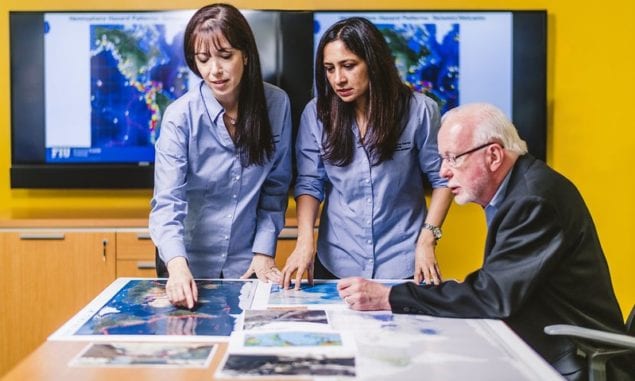
The United States Agency for International Development, Office of U.S. Foreign Disaster Assistance (USAID-OFDA) has awarded a $4.2 million, three-year cooperative agreement to the FIU Extreme Events Institute (EEI) Disaster Risk and Resilience in the Americas program (DRRA).
The program will focus on disaster risk reduction in Latin America and the Caribbean, providing advanced training to higher education faculty and practitioners that will prepare them to help their communities by reducing existing risks, as well as identifying and confronting the driving forces that are creating new risks on an almost daily basis. The training will teach participants about numerical risk modeling and its practical applications.
“The DRRA program continues FIU’s longstanding relationship with the Latin American and Caribbean region on disaster-related issues, and we are honored to again be a partner in USAID-OFDA’s efforts to help the people of the region deal with risks from natural hazards,” said Juan Pablo Sarmiento, the DRRA program team leader and director.
The program will address risks from multiple hazards, including earthquakes, tropical cyclones, landslides, floods and droughts, but will be particularly sensitive to risks posed by the increasing magnitudes and frequencies of hydro-meteorological events, such as hurricanes, storms, and floods, which are of major concern to many communities in the region. The program’s goal is to help communities reduce vulnerabilities, better manage risk, and build long-term resilience – taking at least some pressures off emergency response, relief, and recovery organizations, which are often overburdened and highly stressed.
“There are no such things as ‘natural’ disasters, as hazard events only become disasters when they interact with our human exposures and vulnerabilities, and those derive from choices our societies make, or don’t make,” said Richard Olson, EEI director. “The DRRA program tackles that problem head-on with knowledge, techniques, and assistance.”
The DRRA program will focus on assessing disaster response and emergency management operations, conducting evidence-based evaluations of disaster risk reduction projects, and developing disaster risk reduction capacities in cooperation with partners in the region. Those partners include national emergency offices and non-governmental and civil society organizations and universities.
“The in-country partners are crucial” Sarmiento said, “because they are the on-the-ground multipliers or ‘change agents’ who reduce community risks and develop capabilities and mechanisms for increased resilience. Without them, there are no long-term disaster risk reduction and community resilience effects.”





